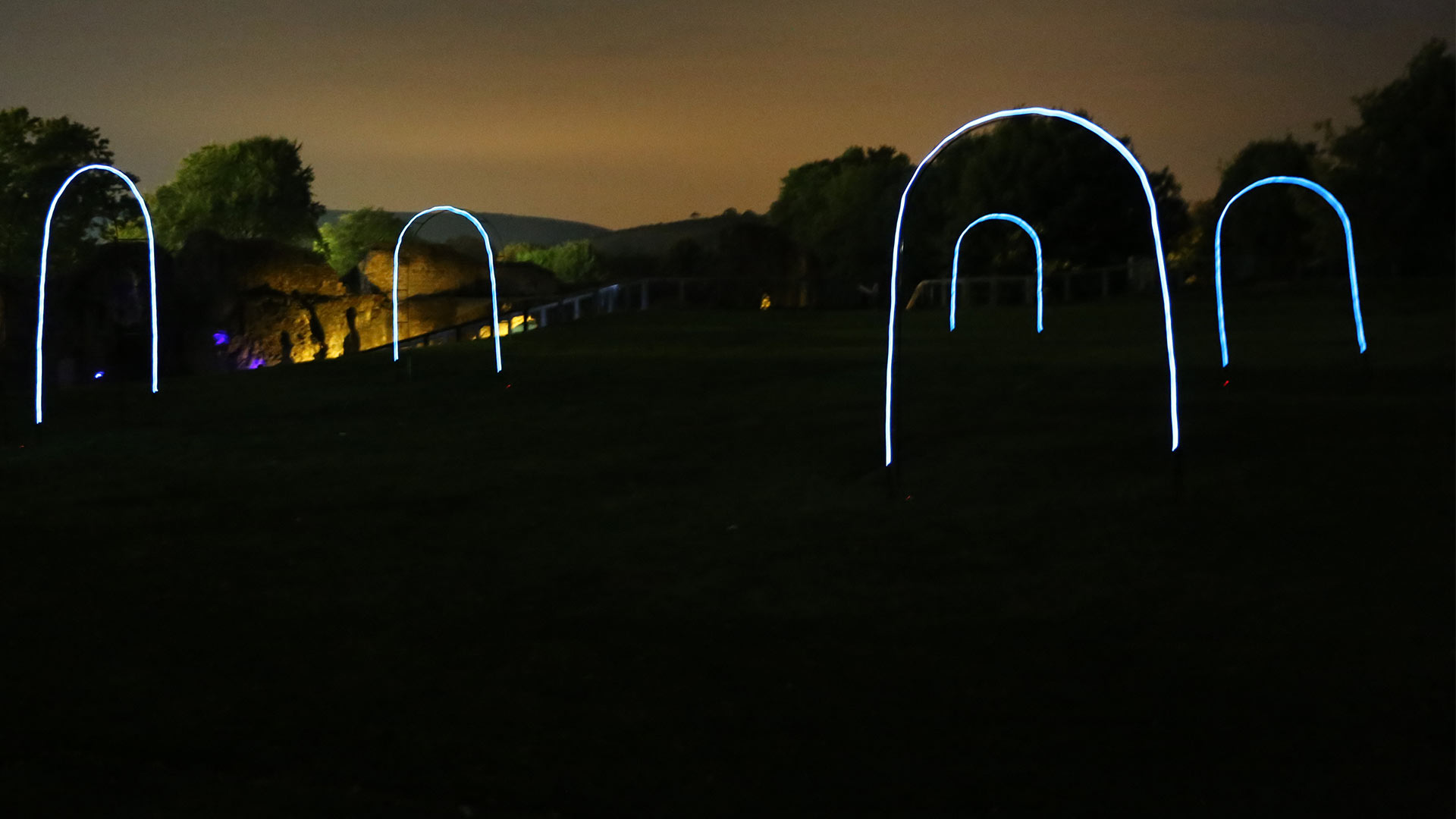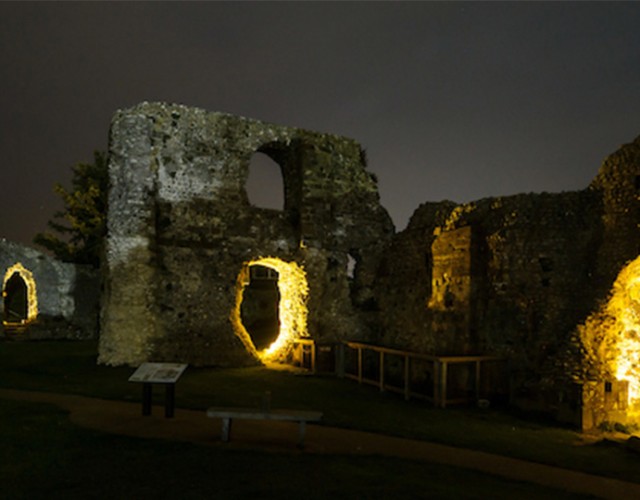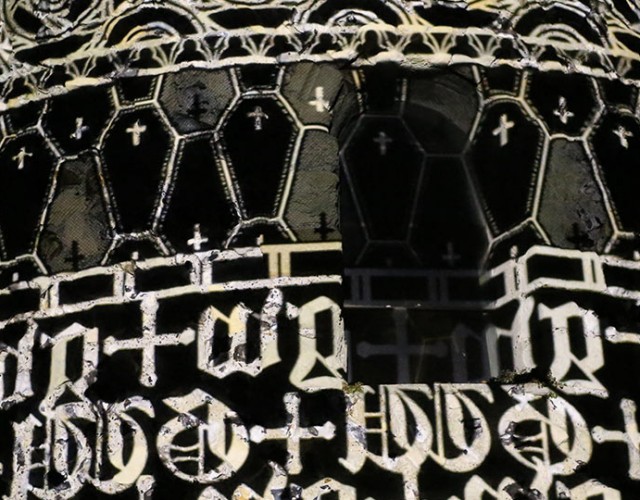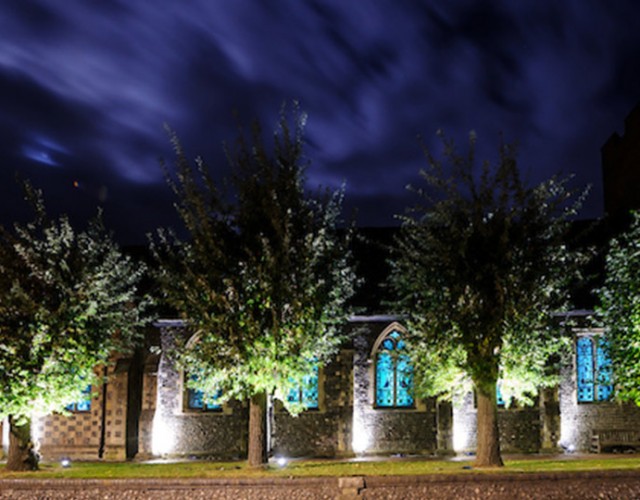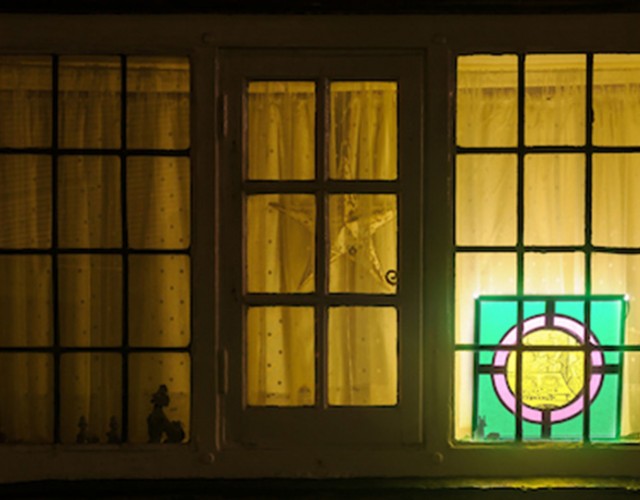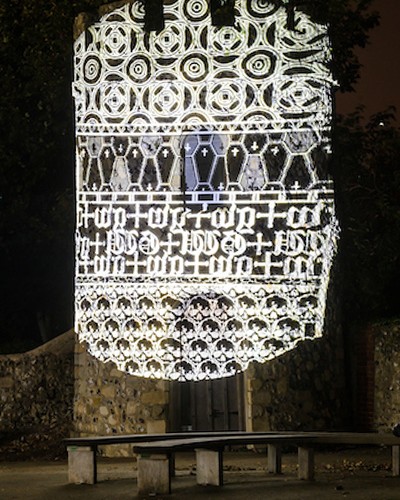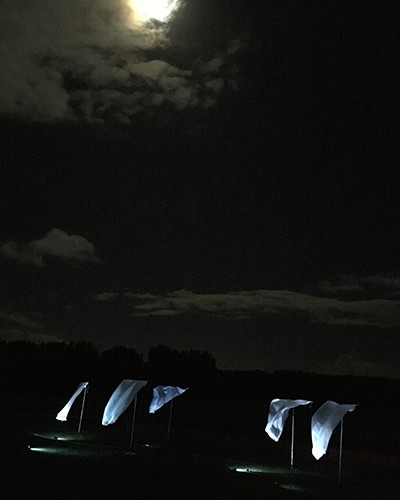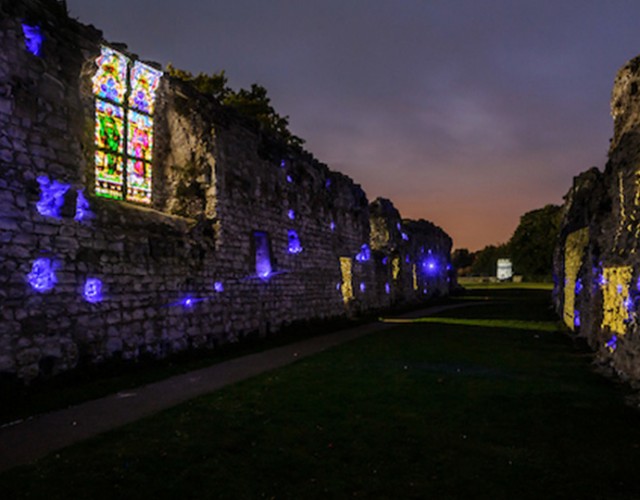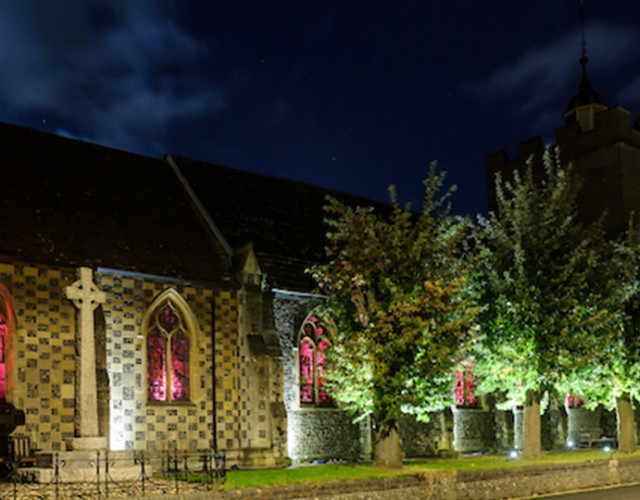Lost stories and the darker side of town life
LewesLight is exactly the sort of event we love: it’s community-based and celebrates the potential of light and lighting to reveal and reinforce the town’s identity. It focuses on Lewes’ rich heritage, architectural history and varied landscapes – and, it holds a special place in our heart because it’s where some of the Nulty team grew up. So after the successful inauguration of LewesLight last year, we couldn’t wait to participate (again) in this autumn’s festival of light.
For us, as architectural lighting designers, it’s the chance to give free rein to our creativity and to work directly with the local community to deliver engaging light installations within a relatively short timescale. (We’re probably also weirdly fond of late night site tests and lugging heavy equipment around haunted medieval ruins at the mercy of the unpredictable English weather!)
This year’s theme focused on “The lost stories of Lewes and darker side of the town’s life” – this allowed us to respond to specific details of bygone times, providing a solid conceptual base for our lighting interventions. Working closely with local historians we explored a number of imaginative interpretations of historical events and sites, making the lighting installations both relevant and creatively challenging.
We weren’t alone though. This year we collaborated with lighting designer Karen van Creveld to bring to life six iconic pieces of Lewes’ historical landscape within the Southover quadrant. LewesLight director (and local lighting legend) Graham Festenstein together with the brilliant Phil Rose, his unflappable support team and the dedicated students of Sussex Downs College, ensured that our installations could and would be installed and safeguarded for the three-night long festival. Additional installations by various renowned local designers and artists resulted in more than 20 illuminated sites positioned along a carefully curated route. Organised walks and guided heritage tours of these sites (with strategically positioned watering holes along the way) resulted in a thoroughly enjoyable and enriching experience for young and old, locals and out-of-towners.
Our first installation on the Convent Field was also the starting point on the LewesLight journey. This sprawling field was once the medieval site of a navigable tidal watercourse that connected with the River Ouse, and beyond that, the English Channel. The tidal watercourse has long since been drained and is now the home of the local football club. In recognition of the significance of this earlier topography, we designed an installation comprising seven contemporary four-metre high mast structures with translucent fabric sails positioned on the field. We illuminated this “floatilla” with icy blue coloured light, symbolising the presence of ancient ships sailing under moonlight. The effect was mesmerising and the stormy weather conditions not only added to the authenticity but also tested the technical design!

Our second installation set out to reference the former site of the medieval Priory Infirmary. Sadly, nothing remains of the building except that the positions of the outer walls are clearly marked out on the ground. We wanted to create an ethereal rendition of this building and decided to use extremely slim, delicate lines of light to delineate the arched doorways that would have punctuated the walls, hence giving visitors an impression of the scale and solidity of the invisible structure.
The sparse yet monumental remains of the vast 11th century Cluniac Priory are visible beyond and formed the site of our next installation. Here we employed a range of lighting techniques to create a sense of the thriving community of monks that once flourished at the Priory until its dissolution in 1537. We included shadow play, projections of colourful stained glass windows, backlighting of deep-set window and doorway reveals and delicate glows of blue light within the numerous small stone recesses. These lighting interventions were accompanied by a carefully restrained audio soundscape that included echoing footsteps, creaking doors and eerie chanting – all adding to the mysterious atmosphere.

Our bespoke gobo projection for the folly known as Blaker’s Tower was clearly visible from the Priory ruins. The graphic content of the projected image included a number of references to the layering of history. For example, the bones of the Priory’s founders, William de Warenne and his wife Gundrada were discovered at this site while excavations were underway for the new railway between Lewes and Brighton in the mid 19th century. Our choice of imagery to illustrate these gruesome events was suitably restrained to avoid upsetting those of a more delicate disposition.
Trinity Church and its iconic windows were backlit with gently colour-changing light to bring out the details of the intricate stained glass, enabling a renewed visibility and appreciation not usually seen externally. This contemporary light treatment was offset by the more traditional uplighting to the row of trees and façade, highlighting the rhythm of the architecture and setting.
Our involvement ended at Keere Street, where the shadowy and dark atmosphere of this unusual street informed the lighting concept. Red filters were applied to the existing street lights to recreate the illicit atmosphere of times gone by, whilst the private houses welcomed our illuminated recreations of colourful stained glass panels, depicting the previous occupations of 17th and 18th century residents. These were positioned snugly behind the residents’ windows, illuminating both the original interiors and the exterior cobbled street. This installation was particularly effective in bringing residents and designers together: a number of residents wanted to keep their plates of stained glass, and we were invited for a tipple at a Keere Street party held specially for LewesLight, pirate costumes included.
The intention for LewesLight was to bring the past to life, using light to tell different stories and celebrate the town’s identity. Combined with some rather enthusiastic tour guides, we believe our lighting installations, together with those at the other sites located throughout the town, brought an historic buzz to Lewes.
After a few days on site, we ended our time in the best possible way: with a well-deserved local pint and traditional pub dinner. We hope this festival becomes a firm fixture in the lighting diary and look forward to next year’s challenge!
All the lighting equipment we used was loaned to us by iGuzzini, Commercial Lighting/Meyer, Applelec, Rosco and Architainment. We’re extremely grateful to them all for generously supporting us and the festival, and for sharing our passion of light.
Images: James MaCauley / Nulty


